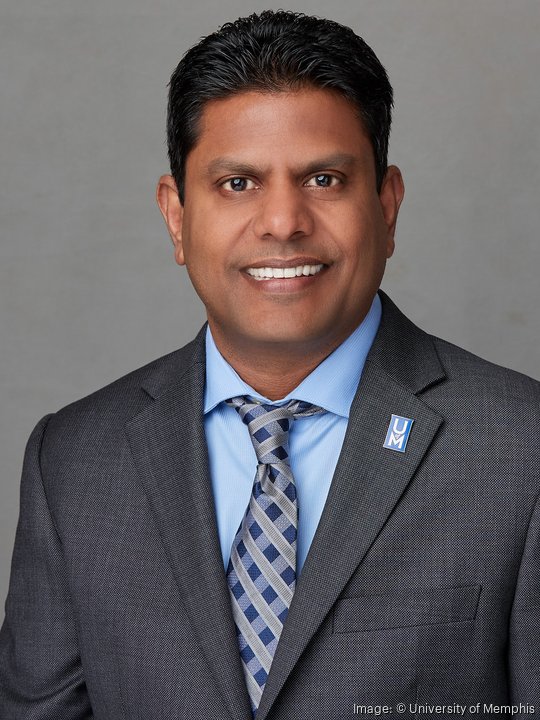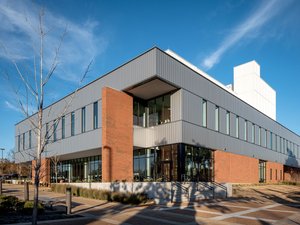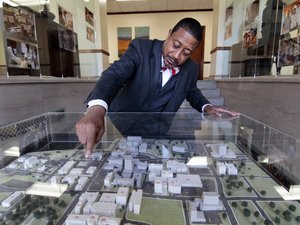
When the University of Memphis Board of Trustees voted in December to extend the term of its chairman, G. Douglas Edwards, he shared his belief that the school is bursting with potential.
“The state of Tennessee deserves to have two recognized public national universities. If the state of Mississippi can do it, and the state of Alabama can do it, then certainly the state of Tennessee can do it,” Edwards said during the meeting. “I think we are at a precipice, and we have an opportunity to move the university forward.”
Edwards does have evidence to back up his claims. In recent years, U of M has gained a significant amount of momentum, growing in national stature and obtaining R1 status — a top research designation — from the Carnegie Classifications of Institutions of Higher Education.
During this time, it’s also overseen a development boom, with the university injecting hundreds of millions of dollars into the campus. This isn’t activity that’s expected to slow down, either: In the coming years, U of M is poised to spend more than $200 million in developments.
MBJ talked to Raaj Kurapati, the U of M's EVP and chief operating and financial officer, about the biggest upcoming projects and what they could mean for the university.
The Fogelman College of Business & Economics
The Fogelman College of Business & Economics building has never been completely renovated, Kurapati said, and the bulk of its finishes, systems, and equipment are from the early 1970s. The facility is due for a significant reinvestment, and one is set to come its way.

The U of M is slated to perform extensive renovations of the college, with plans for a new entry, enhanced modern learning environments, enhanced student interaction and study spaces, efficiencies in space utilization, new HVAC systems, plumbing and electrical upgrades, and new and renovated restrooms and an elevator.
Currently in the programming phase, the project is expected to bring in a designer soon. They would start working this calendar year and continue in phases over the next two to three years. The cost and size of the project could grow.
As of now, U of M plans to contribute $5 million to the project on top of $25 million coming from the State, giving the project a total of $30 million in funding. This, however, could change.
“The university is seeking to raise private funds to expand the scope of the renovation and possibly add additional new square footage to the project,” Kurapati wrote to MBJ in an email.
Mynders Hall
Constructed in 1912, Mynders Hall is the oldest building on U of M’s campus. Originally, it was a residence hall, but its purpose is set to change in the coming years.
“The campus needs to evolve over time,” Kurapati said. “With the recent attainment of the R1 designation, the campus needs additional research space to accommodate our growing research enterprise and support student participation in graduate and undergraduate research opportunities.”
In a $25 million project — $20 million from the State and $5 million from the U of M — Mynders is set to undergo extensive renovations that would allow it to accommodate the university’s growing computational research needs. The extensive overhaul is set to include finishes, fire alarm system, HVAC system, plumbing and electrical upgrades, furniture, and research equipment; and the effort is expected to take two to three years to complete.
The Research Modernization Project
During a Board of Trustees meeting in June 2022, U of M president Bill Hardgrave expressed the importance of investments in the institution’s research facilities and capacity.
“If we really want to retain and build a sustainable R1 model,” he explained, “We have to invest in research.”
At the time, U of M was planning to spend $39 million to modernize 89,000 square feet of space to support research in the sciences, with $37.4 million expected to come from the State and the other $1.56 million from the U of M. But since then, the size and scope of the project has grown.
Now the U of M plans to spend $70 million to modernize 115,000 square feet of space, with $62.4 million expected to come from the State.
“This project is an expansion of the original plan, to accommodate current and growing research space needs of the campus that is based on a comprehensive review of needs that was conducted,” Kurapati said.
The modernization effort will take place in 14 buildings across the campus, with current research space set to be upgraded for specific research needs, and non-research space converted for research use.
The project is expected to benefit both faculty and students, and renovations include fume hoods, HVAC, plumbing, and electrical improvements, generators for backup power, eyewash stations, access control, flammable and corrosive material cabinets, benches, bio-safety cabinets, window treatments, compressed air and gas systems, ionized water systems, filtration systems, and various types of shared research equipment.
Once project funding is available, a designer will be hired to produce the plans and specifications for bidding work.
Interdisciplinary Science Research facility
The modernization project isn’t the only research development U of M has in the works. It also has plans to build a $76 million Interdisciplinary Science Research facility, with $63 million in funds provided by the State.
The project is currently set to contain a vivarium — typically used for keeping and raising animals for research or observation — and house at least 14 wet labs. These labs are expected to have movable cabinets and walls to have the flexibility for a variety of research projects over time.
Kurapati believes the facility will benefit faculty members, researchers, and students, and funding will dictate the timeline to begin construction. U of M officials estimate that the design will take a year to produce, while construction will take another two years.
And like the research modernization project, the Interdisciplinary Science Research facility is expected to go a long way in helping increase the U of M's stature as a research institution.
“It is a basic need to have facilities that will accommodate R1 research goals, activities, growth, and sustaining the R1 designation,” Kurapati said.









